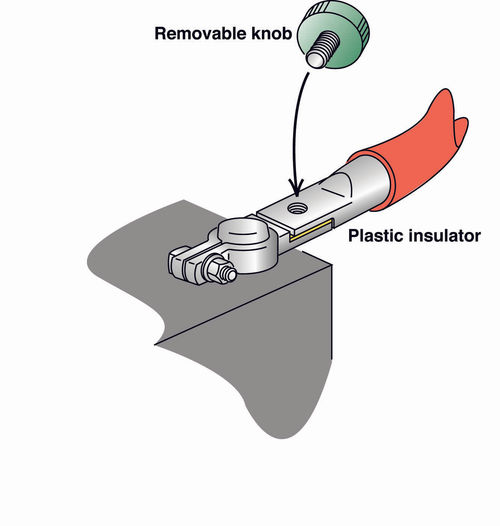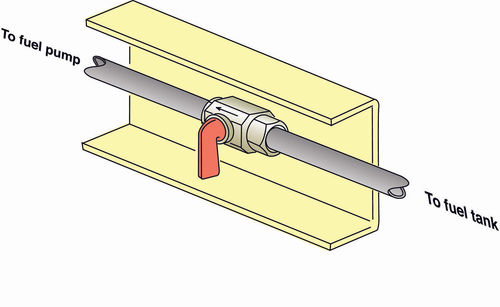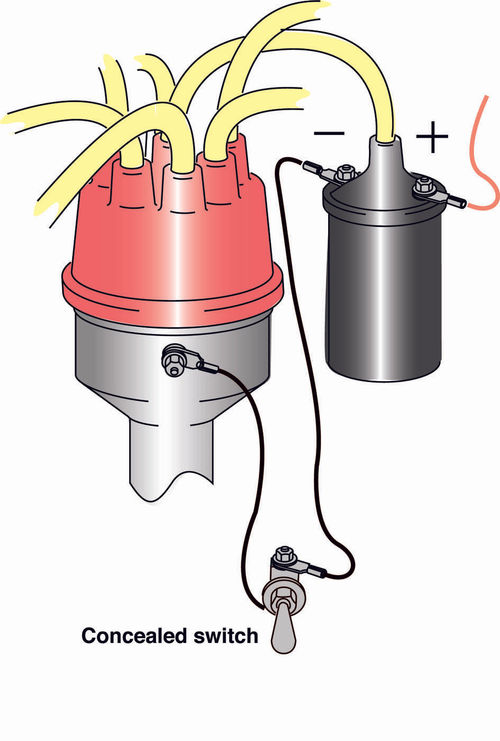Thwarting thieves
Question:
I am the proud owner of a restored 1956 Chevy Nomad and I want to go on some of the tours that the VCCA has, and I also want to take it on the road to visit family and friends. The problem is, at motels, you have to park outdoors overnight, which makes the car vulnerable to thieves. Do you have any suggestions as to how to keep it from being stolen?
Answer:
You can’t stop pros, but you can stop most thieves most of the time by making your classic more difficult to steal. Here are some tricks that I have picked up over the years that have worked well for me:
If you have a vintage restored car, Often, a hotel or motel will be happy to have you park right in front, under the lights, or in front of the office because it will draw people in. However, if you do have to park your chariot around back, at least cover it with a good quality car cover that locks in place underneath. I wouldn’t stop there though. Here are some tried and true tricks that will thwart most thieves:
An easy theft prevention trick with breaker-point ignition is to simply open the hood and switch the coil high-tension wire with one of the sparkplug wires on the distributor. The car will pop and bang, but it won’t start. Most thieves will never spot what you have done, and will be frightened off by the unexpected noise and lack of mobility.
Just remember to switch the wires back before attempting to start the car yourself, lest you treat other guests to a cacophony of misfires. Perhaps the best thing about this little trick is it’s free and easy, but don’t try it if you have upgraded to HEI ignition, as doing so could ruin it.




One common theft prevention device is the locking club. Strapped across your steering wheel, it makes your car impossible to drive for any distance. And it has the advantage of being highly visible, which can act as a deterrent all by itself because most thieves are looking for easy prey. The club can be defeated, but few thieves know how, and most won’t try. The fact is though, a pipe cutter will defeat it because the telescoping part is hollow, but most thieves don’t realize that. Clubs are available at auto parts or hardware stores for around $20-$40 depending on the model.
Another inexpensive theft prevention device is the two-piece battery terminal. The part of the terminal that grips the battery post is insulated from the piece that goes to the cable by a thick sheet of plastic. Connecting them together to allow you to start the car is a large removable knob that you take out and pop into your pocket when you leave the vehicle. This device will certainly fluster some, but it is pretty easy to defeat if a thief carries his own knob or can scrounge up a correct-size bolt.
Two-piece battery terminals do make disconnecting your battery a breeze though, and that’s great when you want to work on the car or want to store it for a prolonged period, because it prevents such components as electric clocks from running the battery down.
To install the two-piece terminal you will need to remove the existing connector from the cable and strip back a bit of the wire. You then attach the two-piece terminal and tighten or crimp it into place, depending on its design. The down side to these two-piece terminals is that they don’t look right on a faithfully restored show car. Twopiece terminals can be found at auto parts stores and auto swap meets for as little as five dollars.
One caveat though, concerning more recent cars when disconnecting the battery is that doing so will upset your radio, clock and accessory settings, and may possibly cause problems with your on-board computer as well, because it will put it back to its factory default settings.
A fuel shut-off valve is a great way to thwart thieves too. It’s a little work to install one, but it would take a mechanic to figure out what the problem is when trying to start the car. You can mount the valve at the back of the car, inside the frame near the gas tank where it can’t be seen except when the car’s on a lift.
You will need to cut the fuel line with a tubing cutter, add a couple of double-flared nipples, and hook it up. Someone trying to steal your car might be able to get it started if it has not been sitting long and there is fuel in the float bowl of the carburetor, but they won’t get out of the parking lot before they run out of gas.
It is a bit inconvenient to reach under the car and turn the lever on the valve, but no one is going to spot the valve. Such shut-offs are also good to prevent fire when working in the engine compartment. Once again, don’t forget that you have closed the valve, because it is not good for the old diaphragm-type fuel pumps to pump air for any length of time. Larger auto parts stores carry shut-off valves, as do Home Depot and other do-it-yourself outlets. Just make sure you get the right size for your fuel lines.
By now you may have noticed that all of these suggestions have to do with depriving the engine of either spark or fuel. And that’s because to start a car you need both. Cut off either one and the car becomes a paperweight. Similar to the fuel line shut-off switch is the battery cut-off switch, which is a lot less trouble to install. A typical one for a 12-volt system costs as little as $5 at swap meets, but you will need a bigger switch for a six-volt system because six-volt batteries produce twice the amps.
The switch can be installed in either the positive or negative battery cable, depending on your application. Many earlier cars used sixvolt batteries and positive ground, though negative ground is standard today. To install a cut-off switch you simply run—for example— the positive battery cable to the switch, and then attach another cable with screw terminals on both ends to go from the switch to the starter. Mount the switch where it is not obvious, such as on the frame or underneath, and coat its terminals with white grease to protect them from corrosion.
Some battery cut-off switches come with a removable key, which will make a thief’s job harder, assuming he discovers your cut–off switch in the first place. But other switches have the on-off lever built in. In that case, concealment is more important. Of course, even without the key, once he discovers your cut-off switch, an enterprising thief with a half-inch wrench can just switch the wire from the starter to the terminal for the cable from the battery and start the car although anything that will slow him down might convince him to move along to another vehicle.
As with the two-piece battery terminal, the ignition cut-off switch is great for disconnecting your battery while working on the car, and it is also good for preventing the battery from discharging over time when the car is being stored. Coupled with an automatic trickle charger, these devices can really prolong the life of the battery in a classic that is seldom driven.
Twelve-volt switches are available at auto supply stores, as are the battery cables with eyes at both ends that you need to go from the switch to the starter. Larger six-volt switches are available through clubs and hobby publications. A small distributor switch (dizzy switch, as they are known to hot rodders) can be mounted in the wire that goes from the negative side of the coil to the distributor, and can be used to immobilize the ignition. This switch can be mounted in a hard-to-see spot in the engine compartment, or even in the glove compartment of your classic.

All you need to do is flip the switch to cut out the ignition system. The engine will turn over, but it won’t start. If a thief has the presence of mind and sophistication to locate the switch, he can easily take the car, but usually his futile attempts to start your classic will unhinge him enough to put him on the run before he can figure it out.
A more sophisticated version of the dizzy switch that my friend Sandy Escalante at Custom Auto Service in Santa Ana, California, showed me is really clever. Instead of using a typical hardware store toggle switch to stop thieves, you purchase another dimmer switch (they are still being made, and are available from parts houses) and mount it on the toe board of your car above the real dimmer switch. It can only be seen by bending down to look under the dash, but it is so convenient to just click it on and off with your toe. The duplicate dimmer switch is wired into the coil the same way you would hook up a standard toggle switch.
















